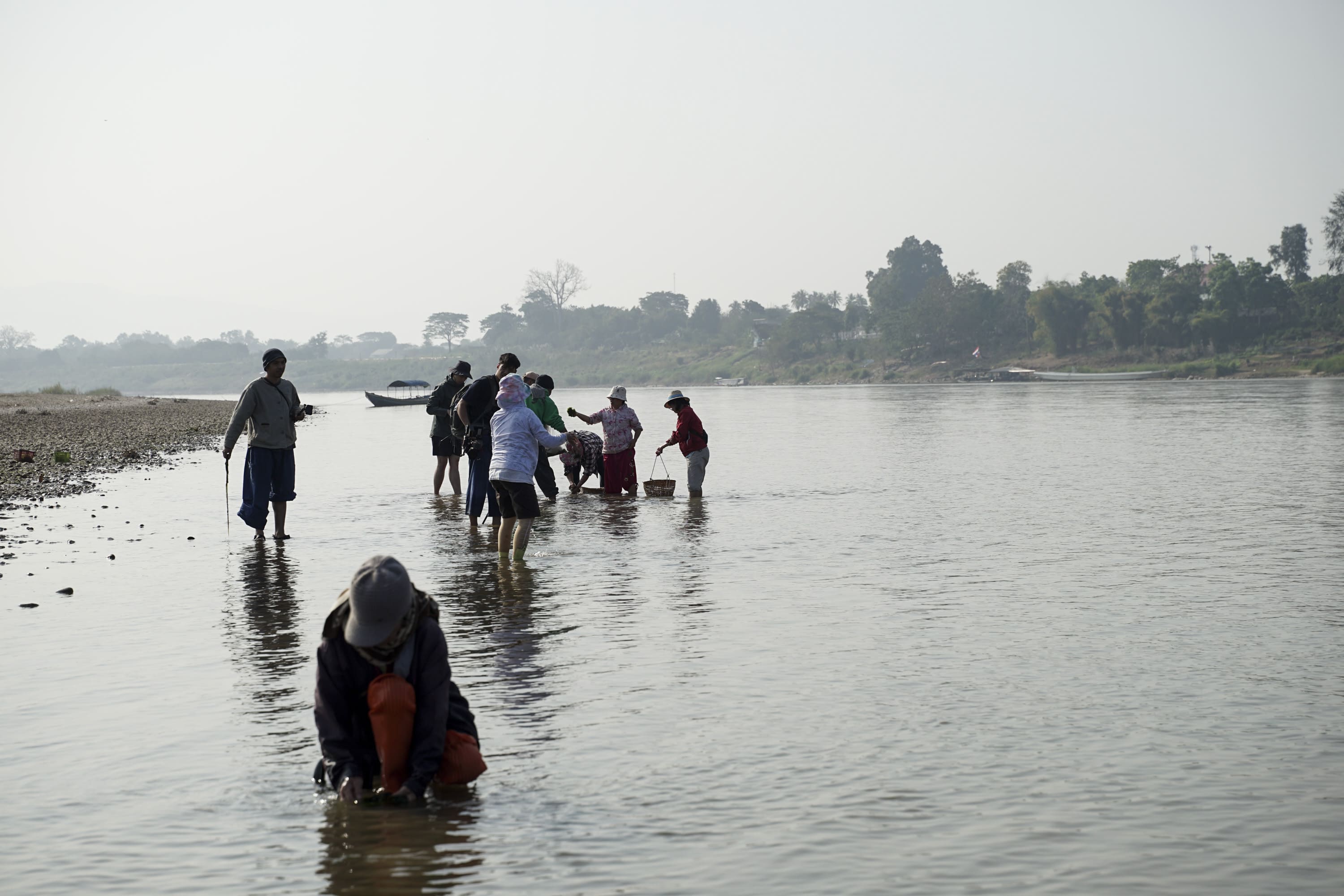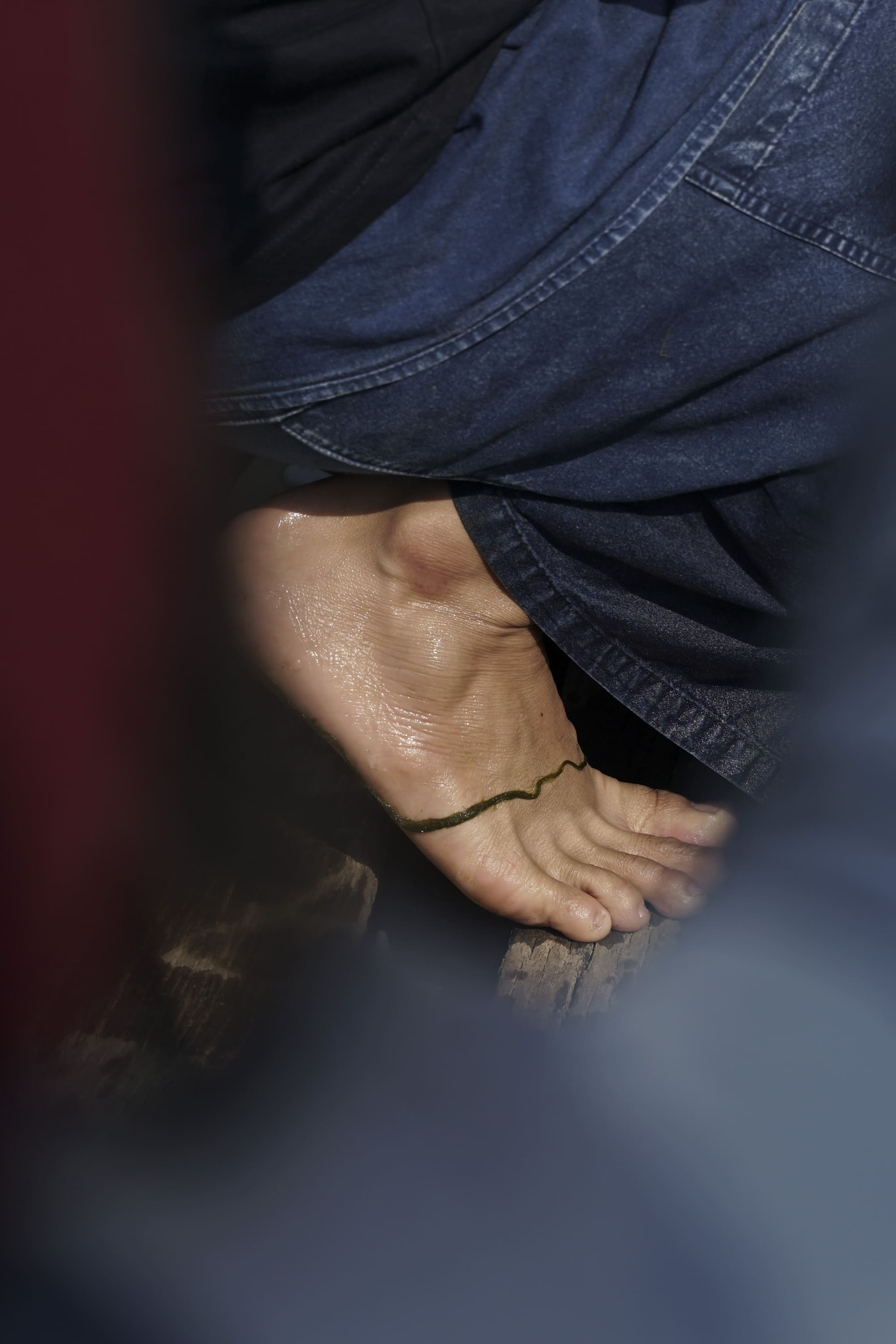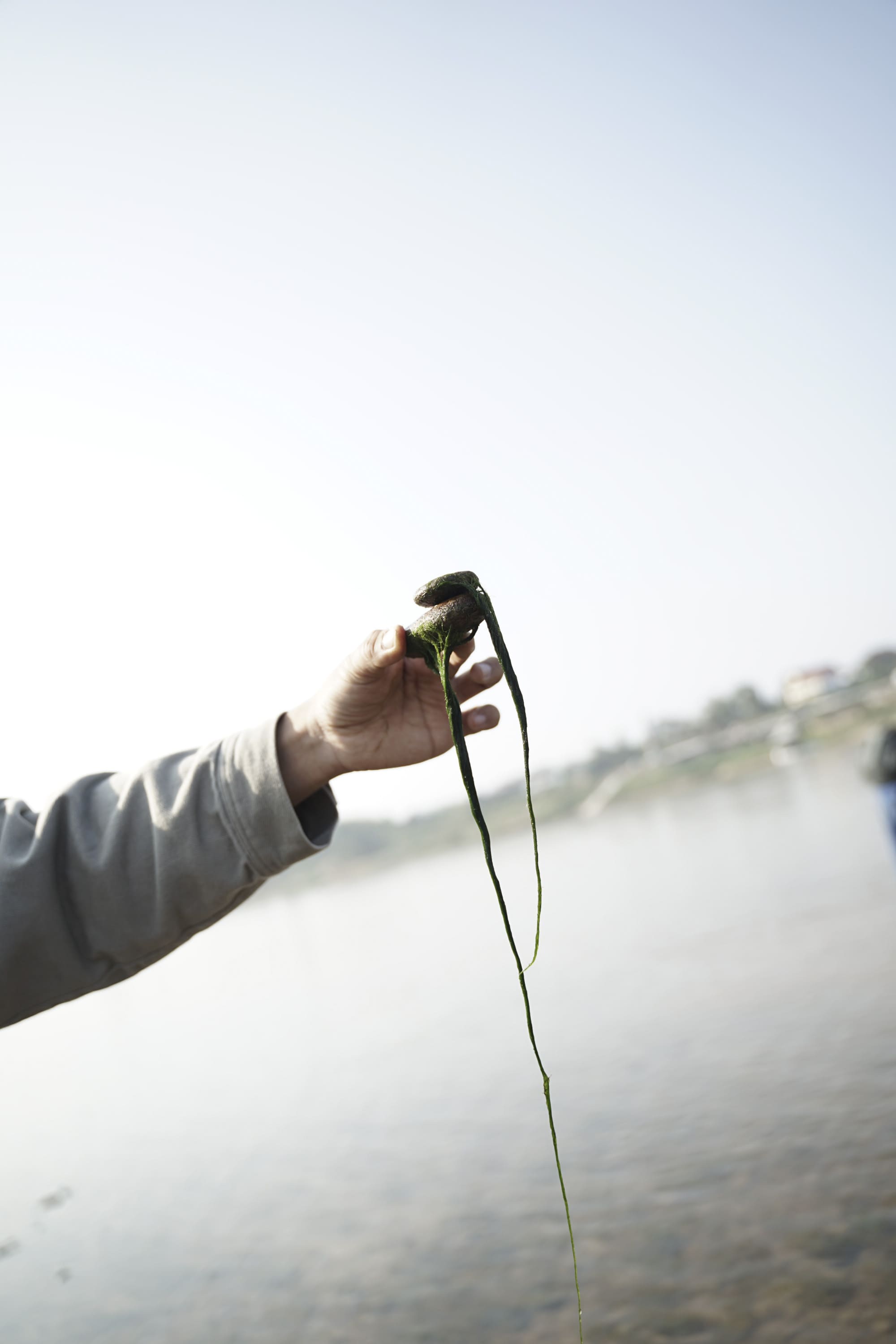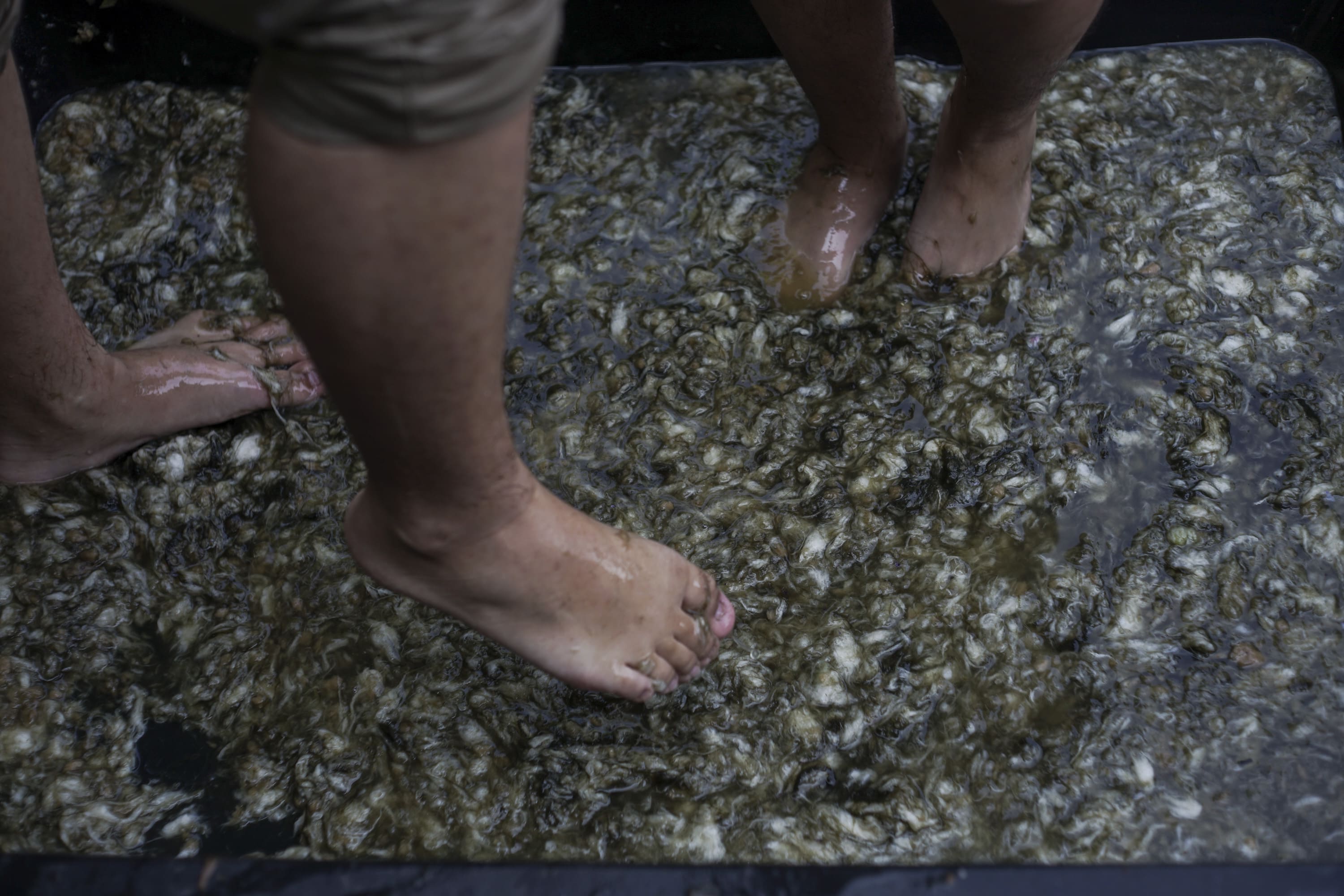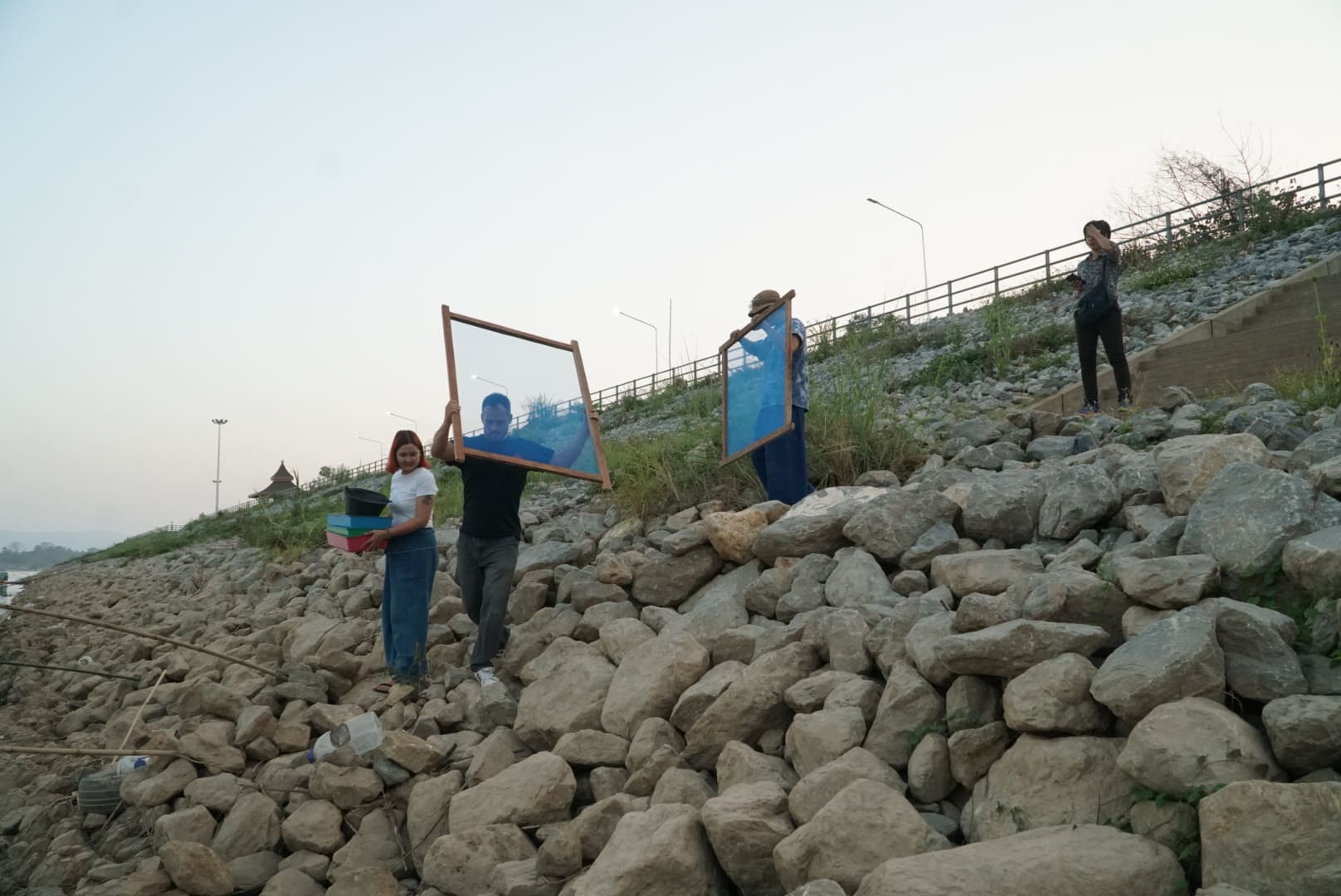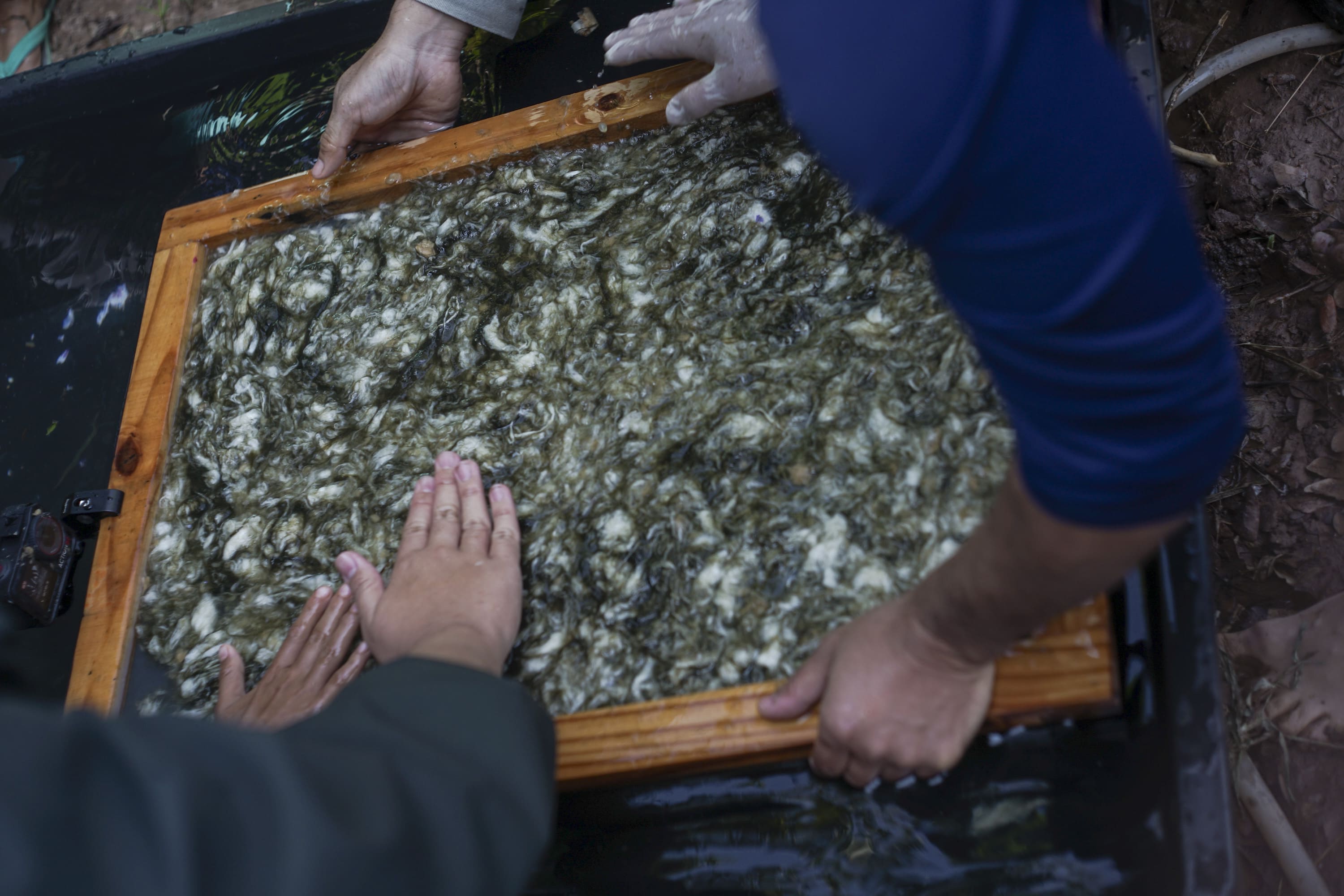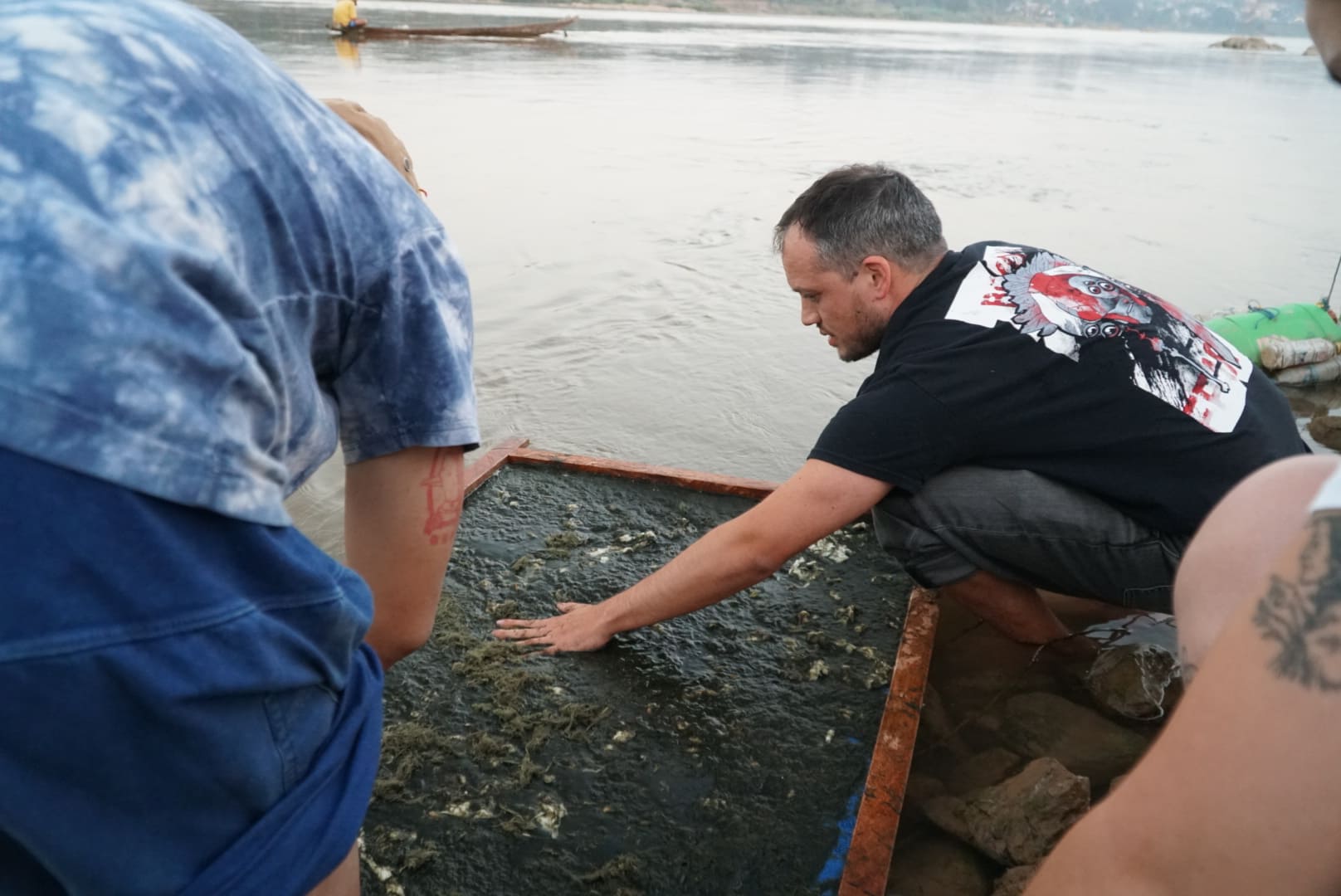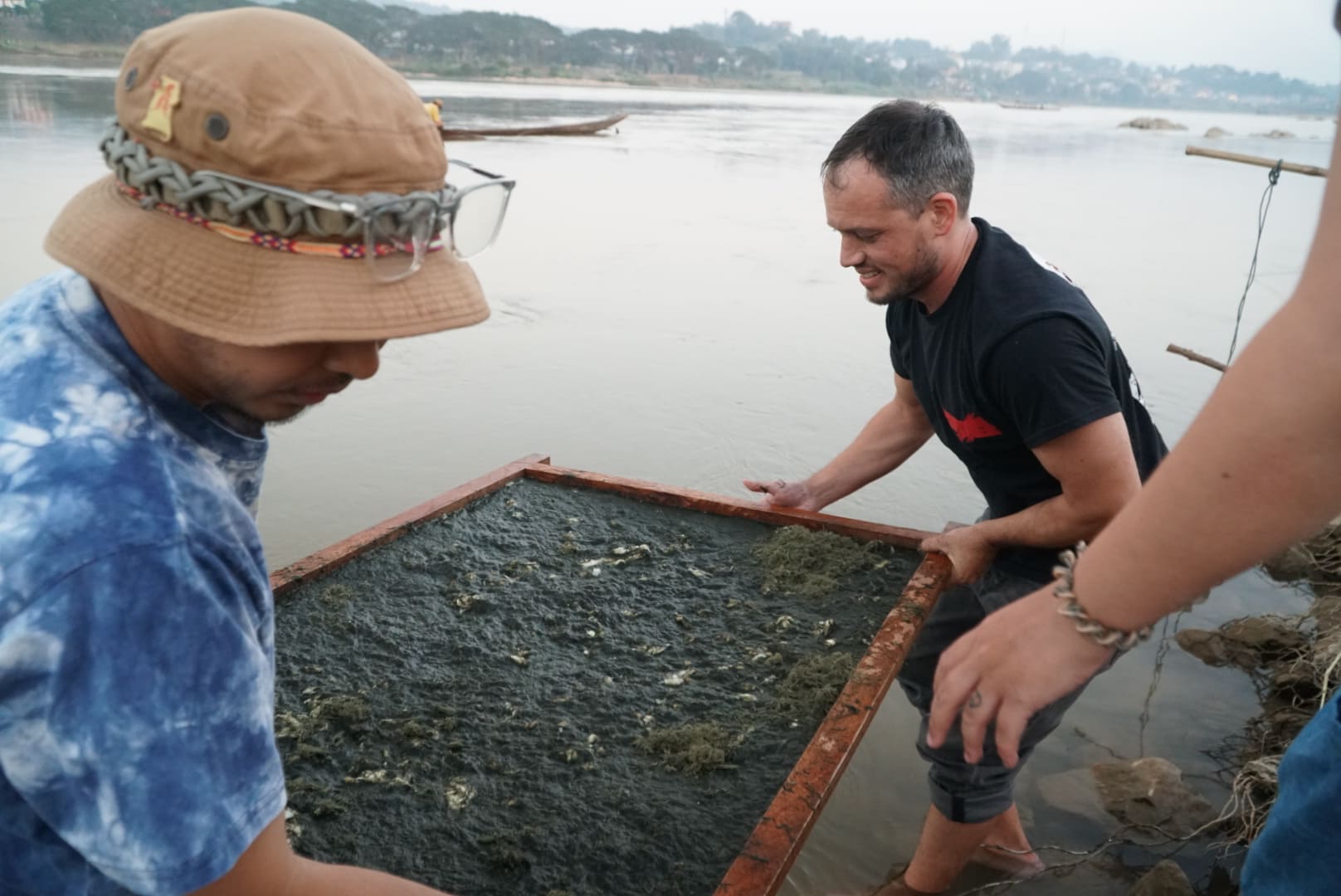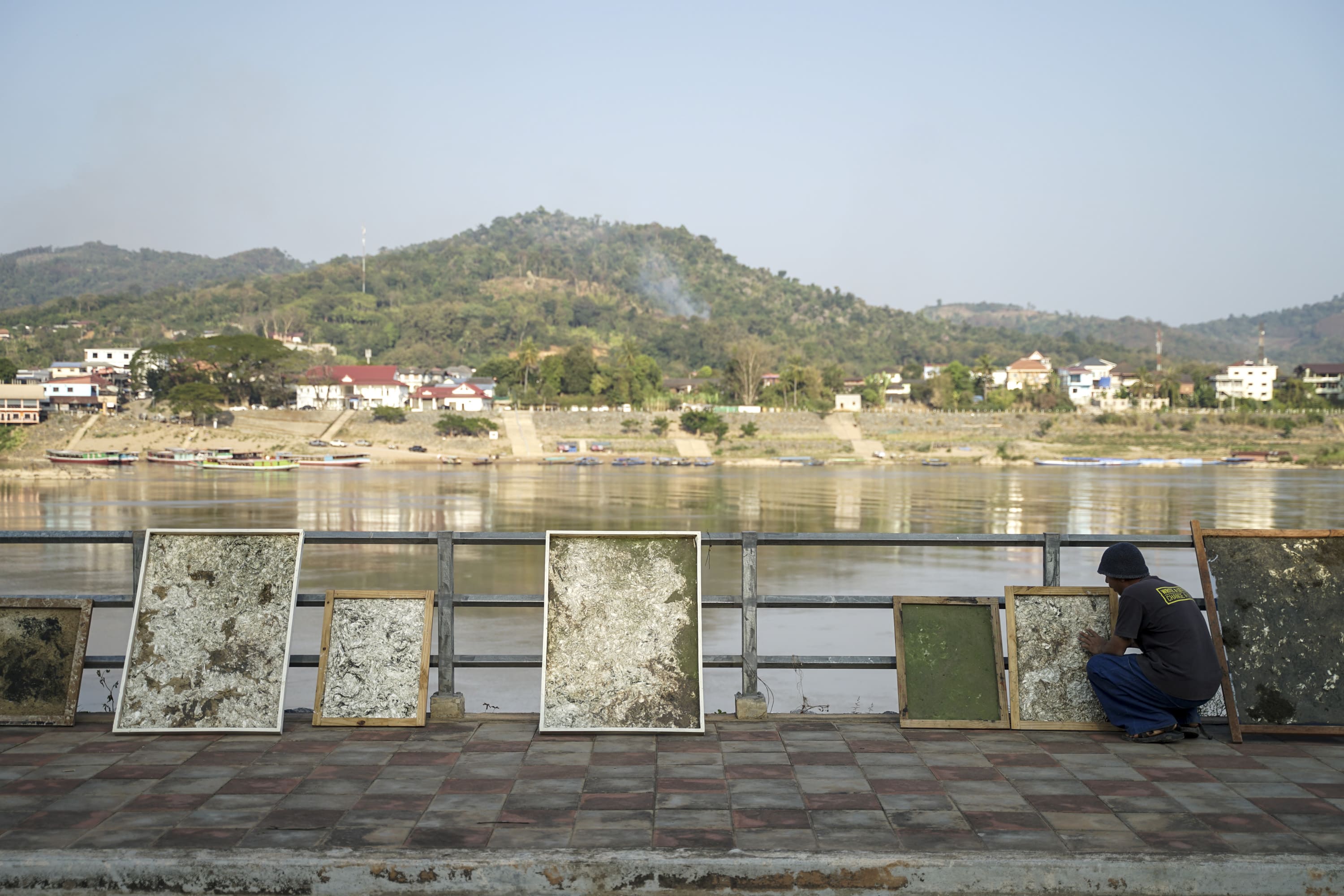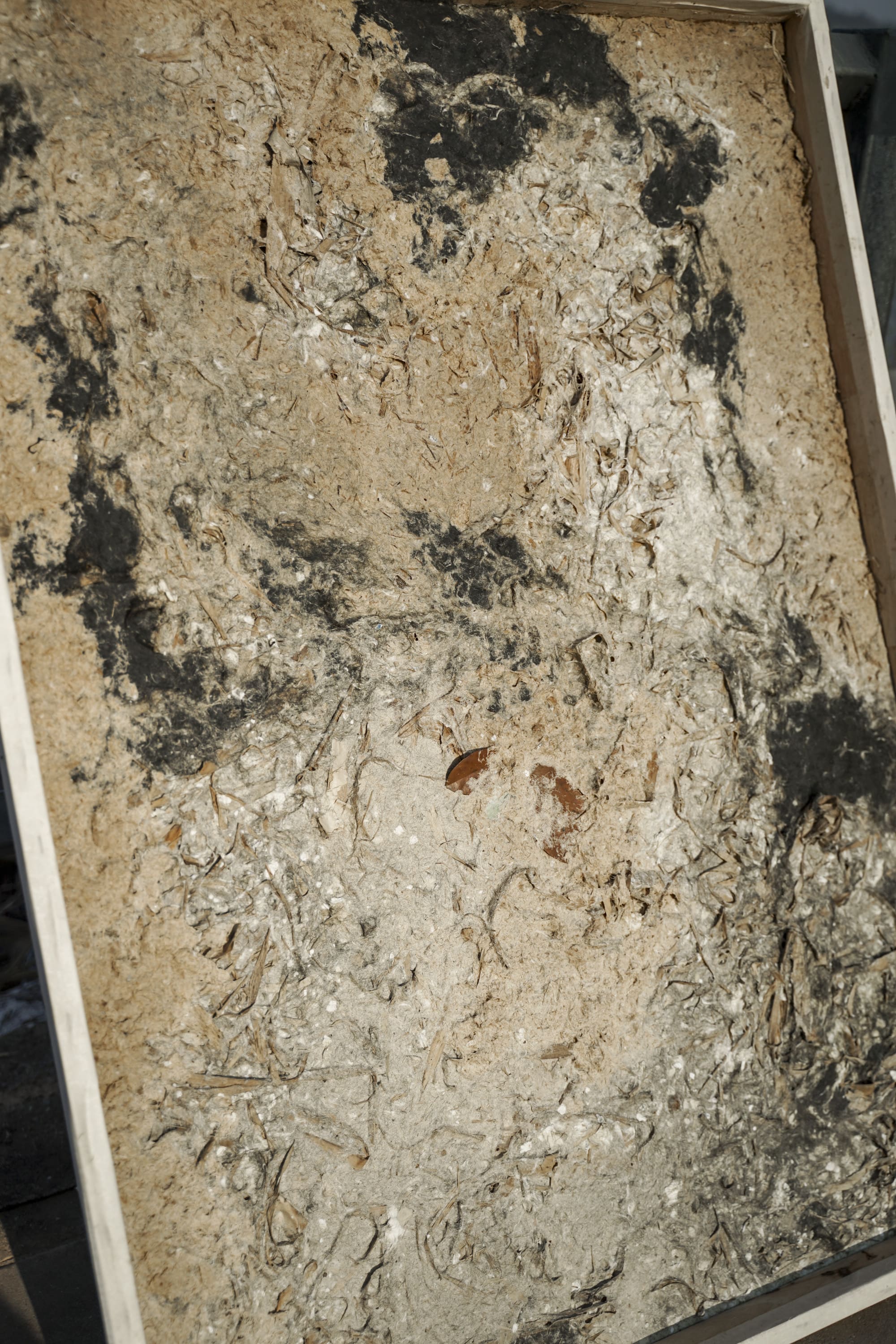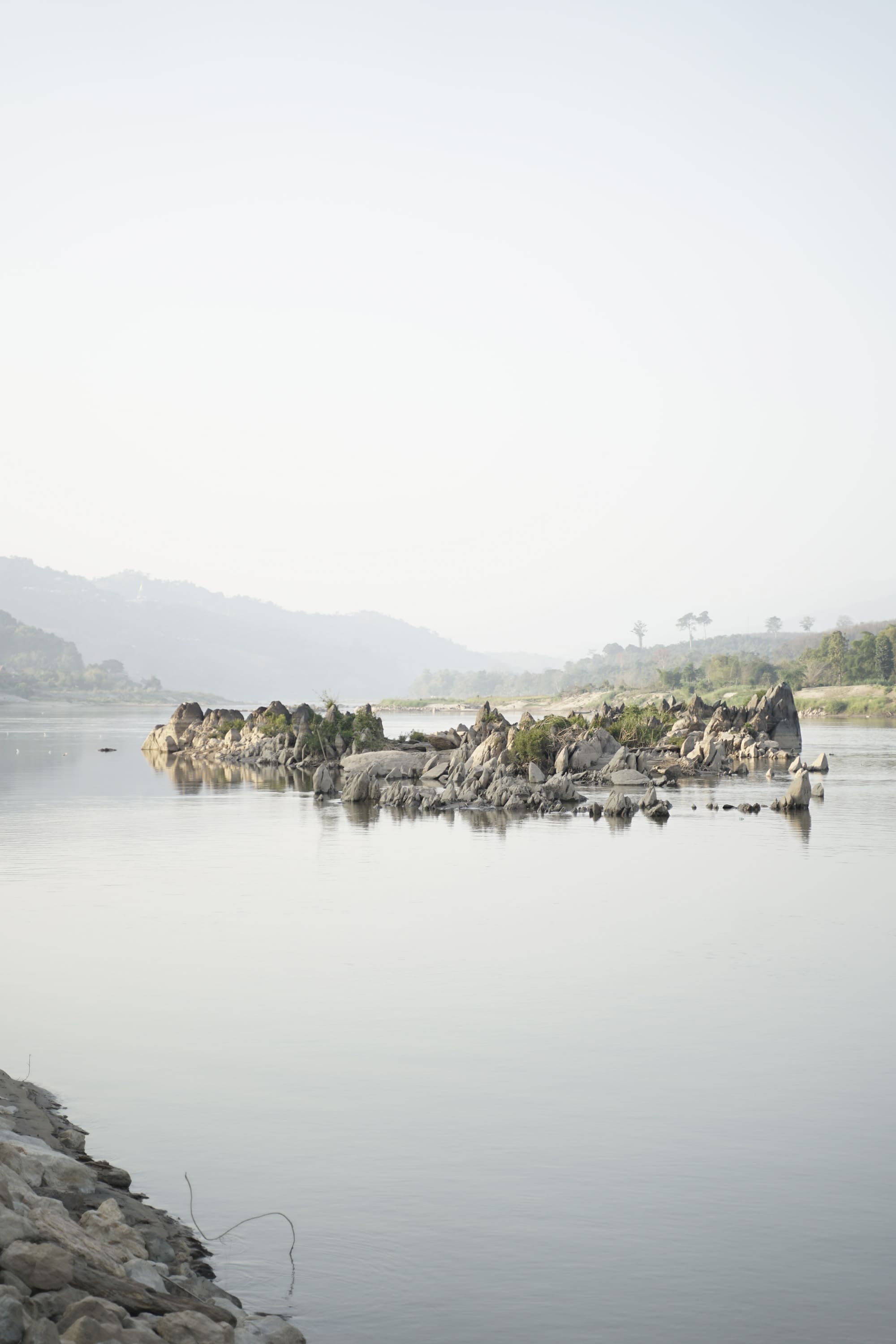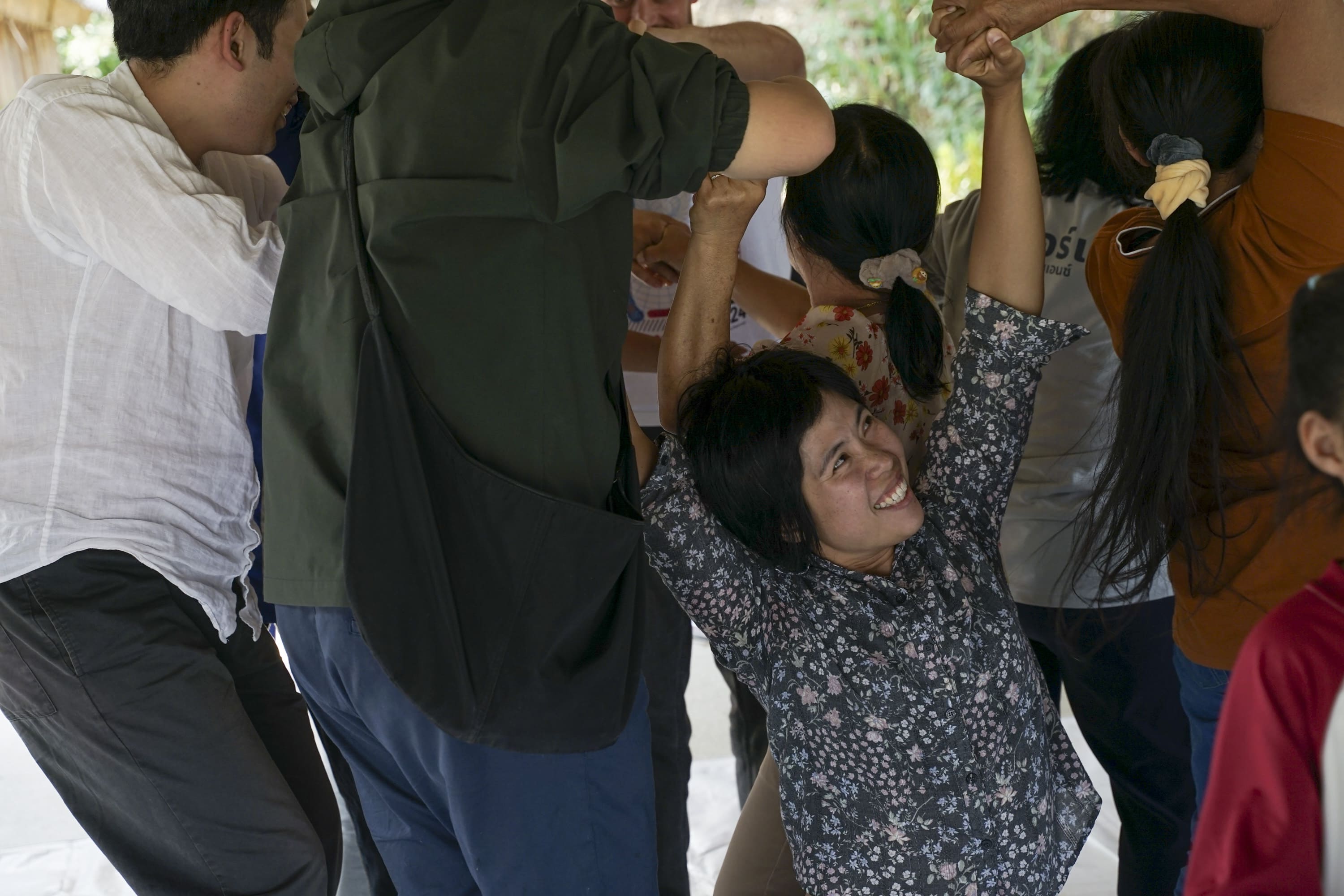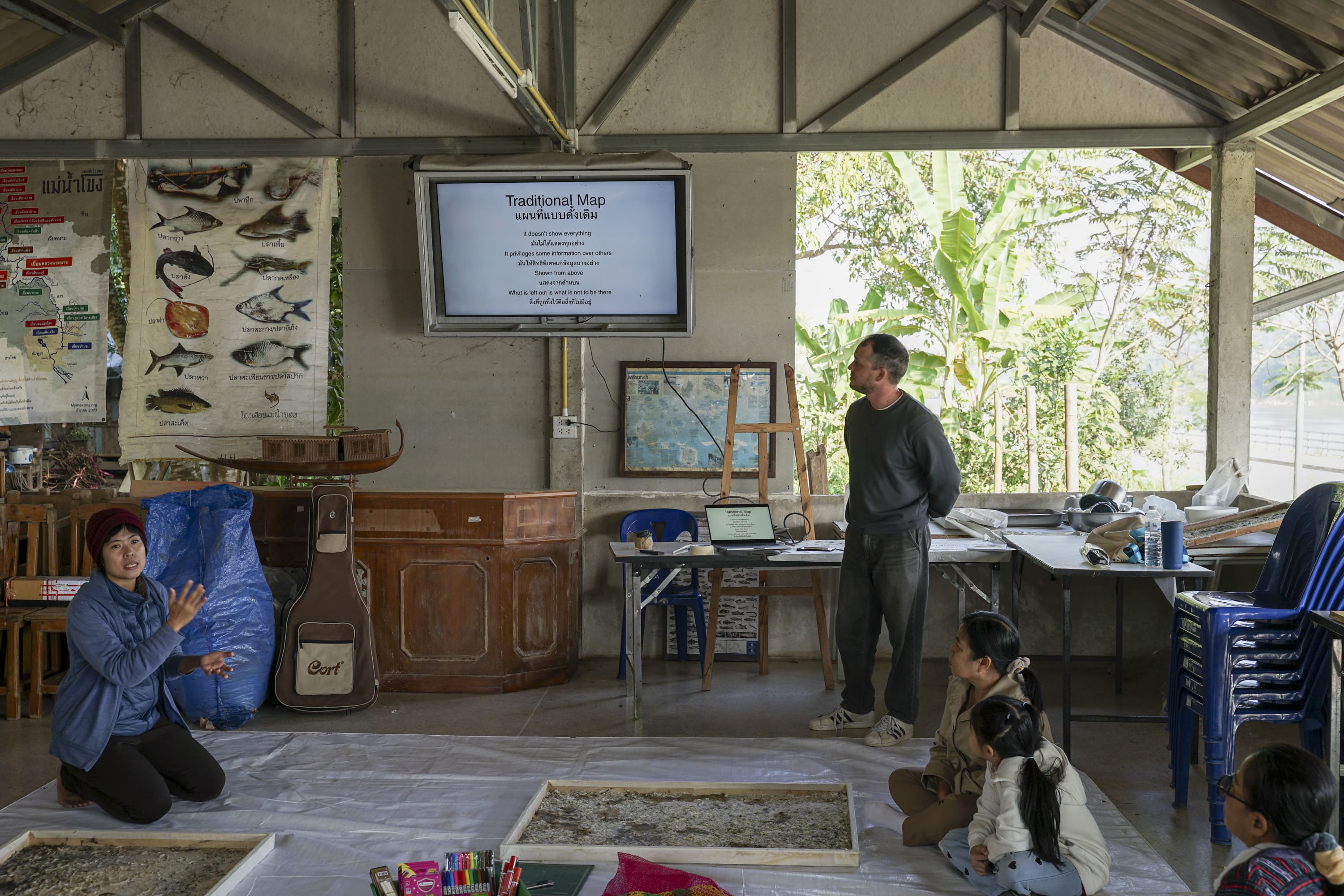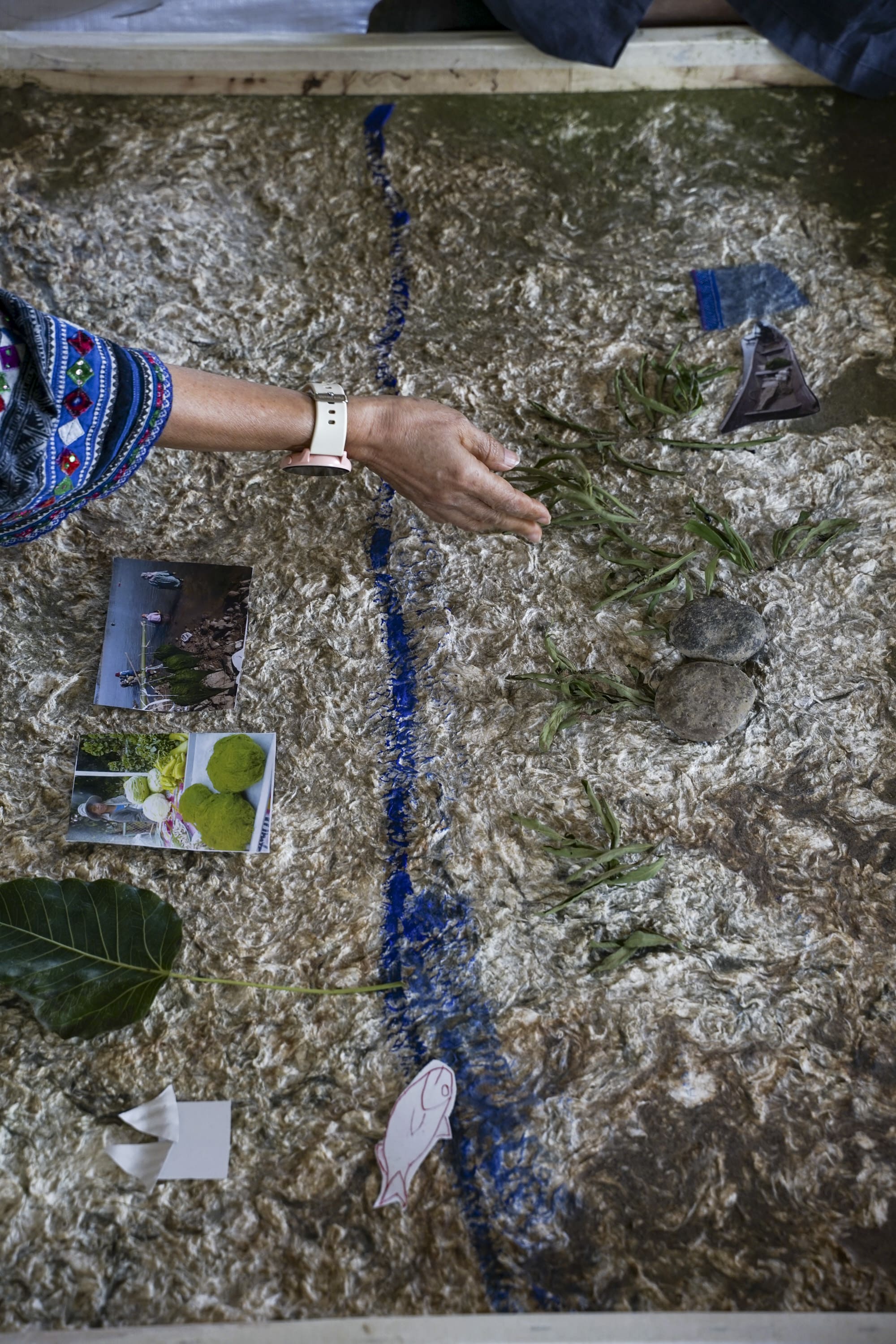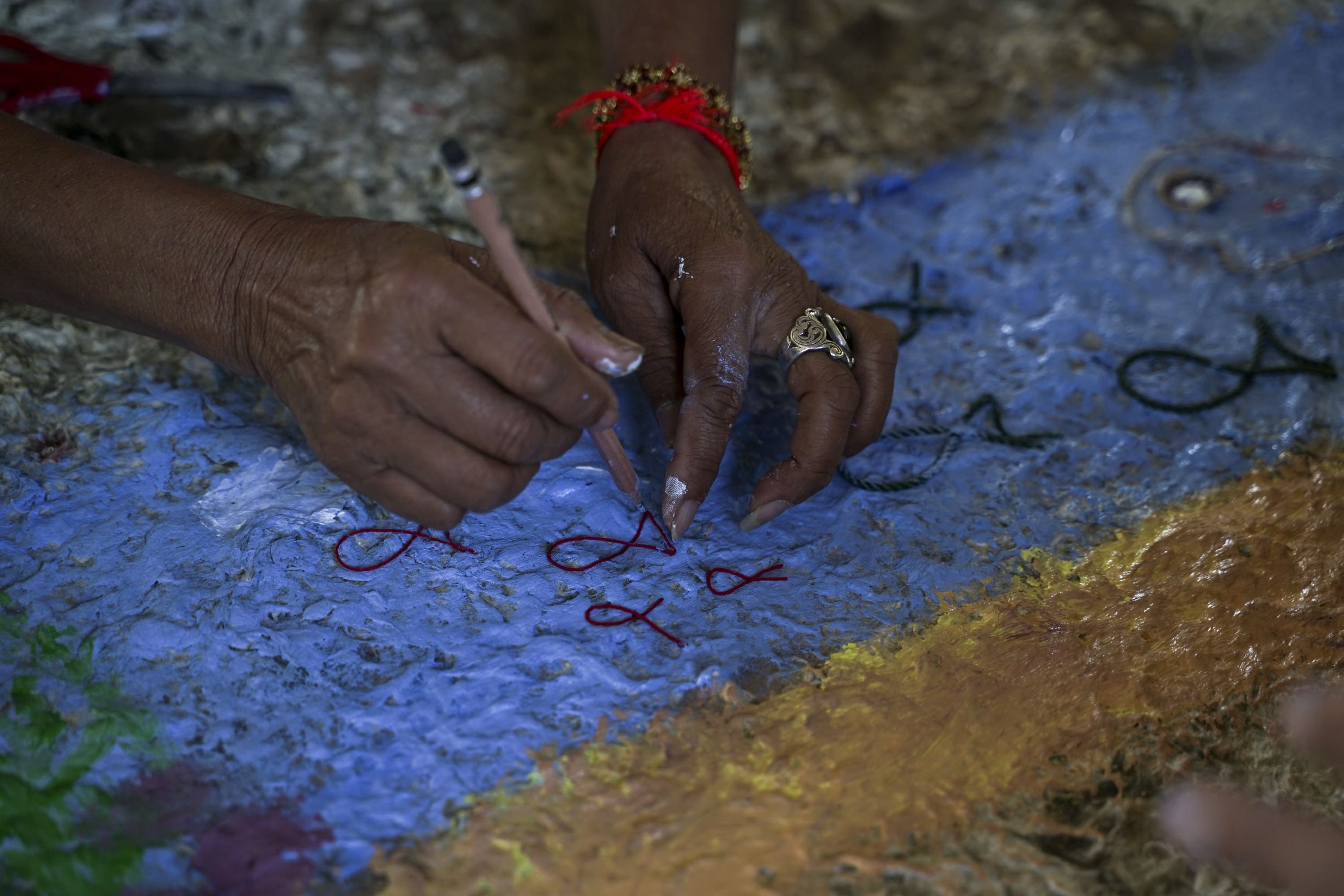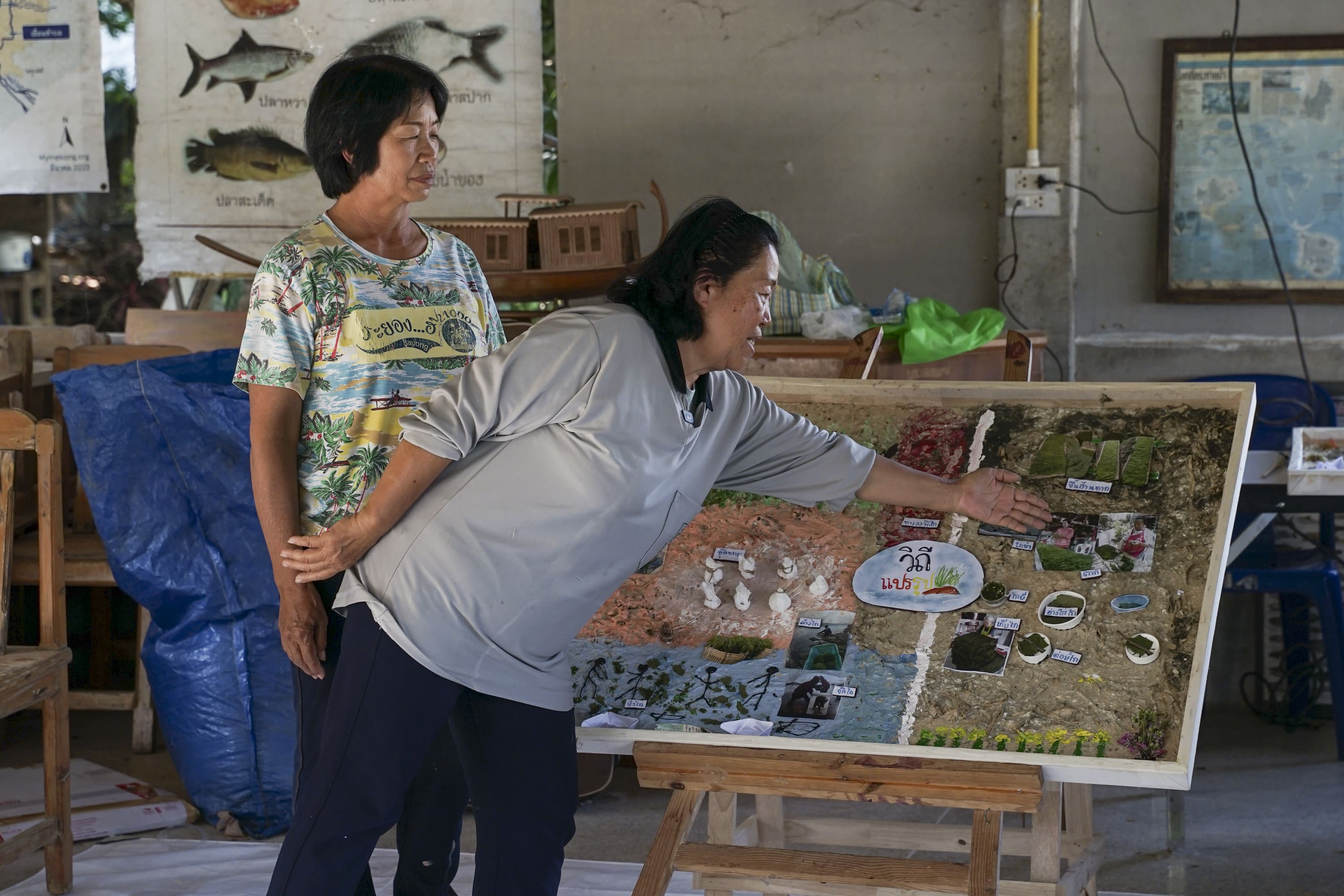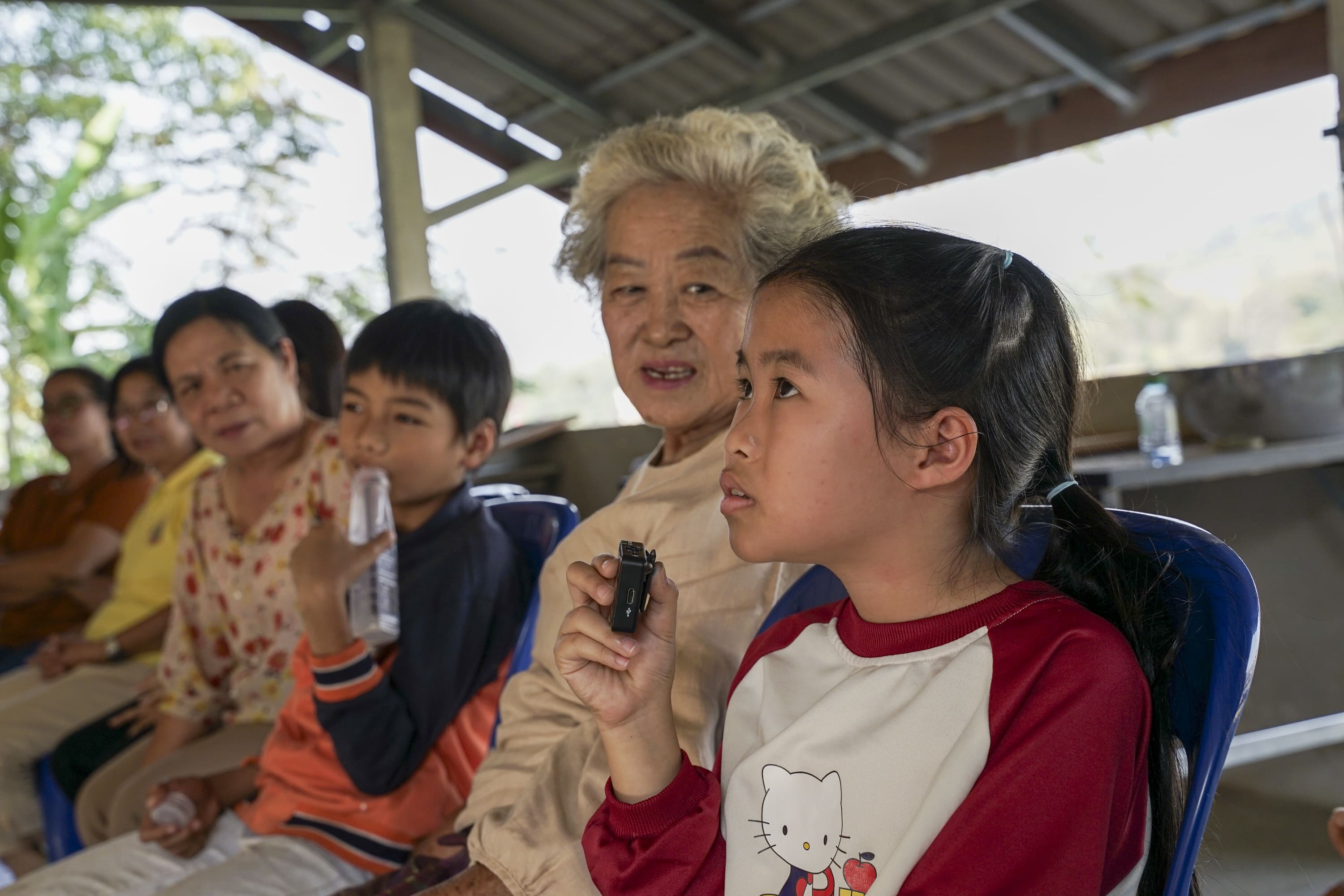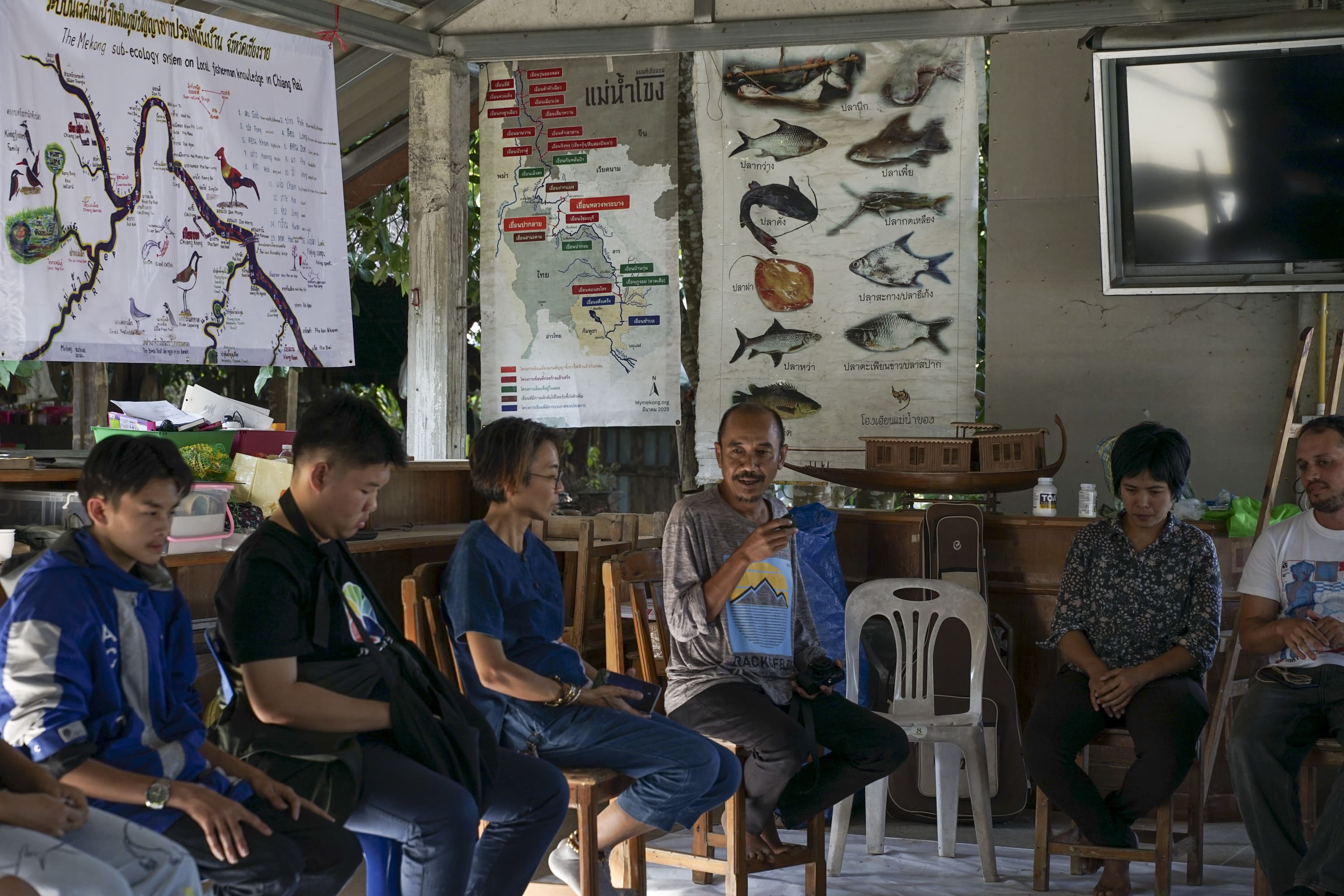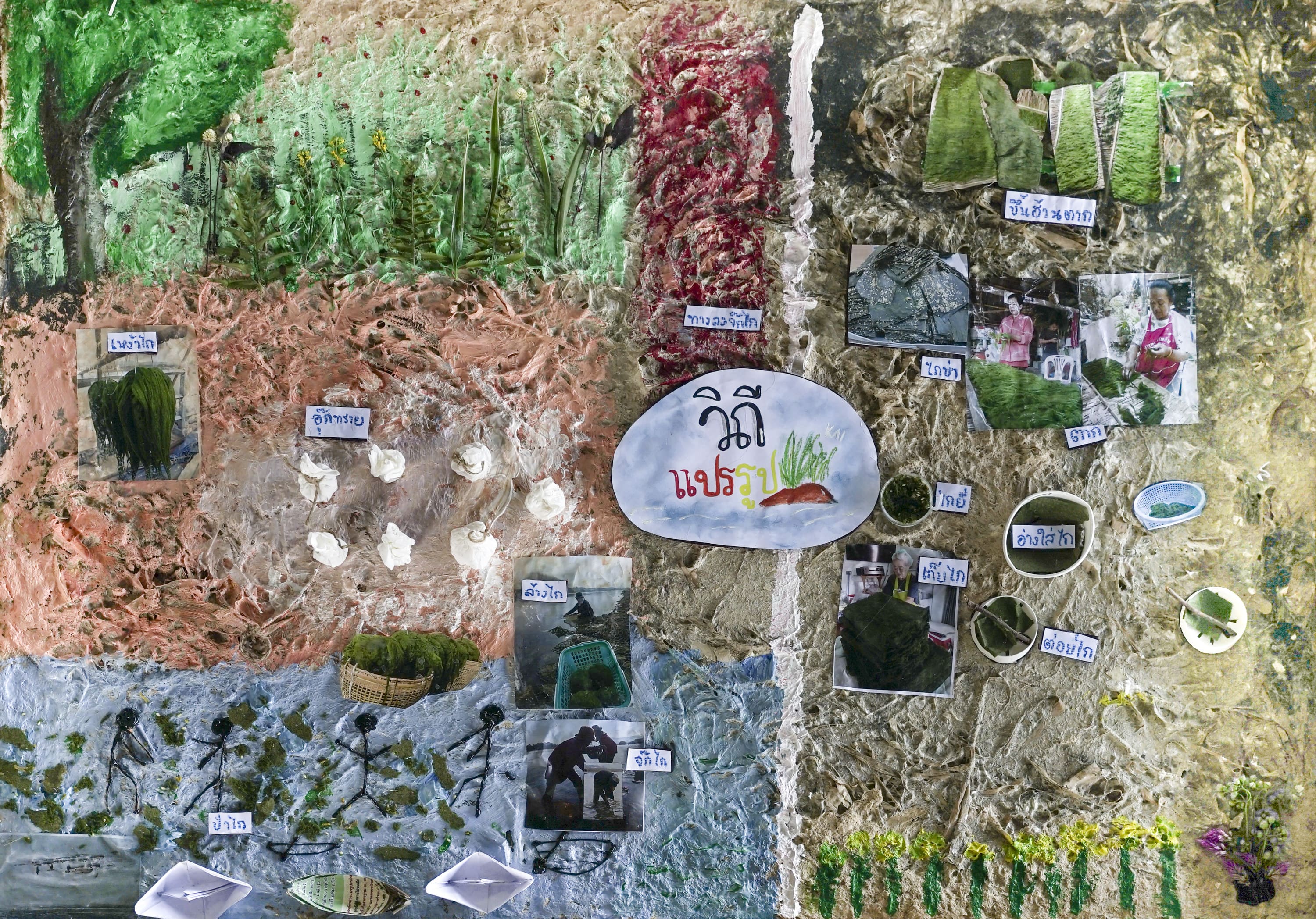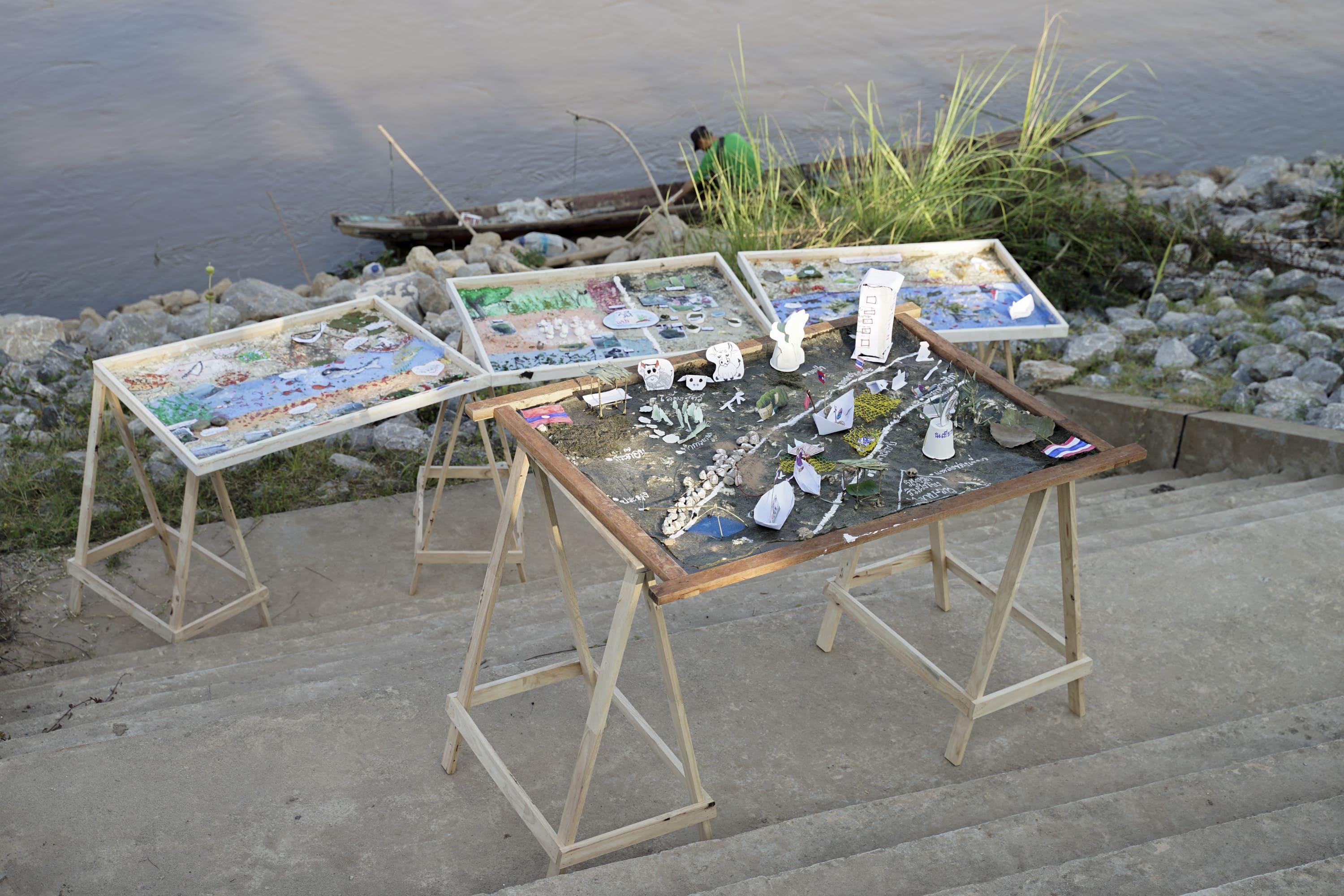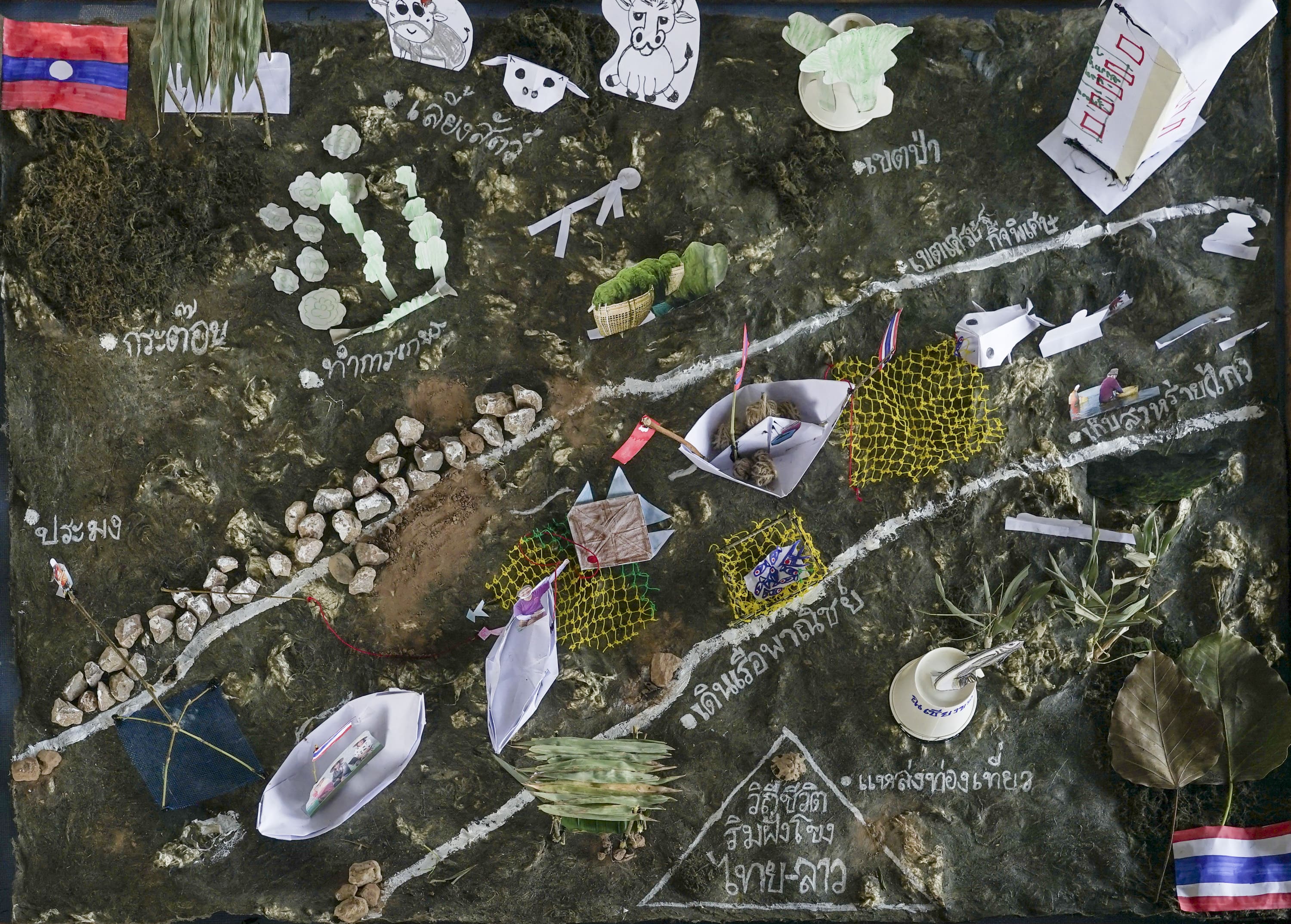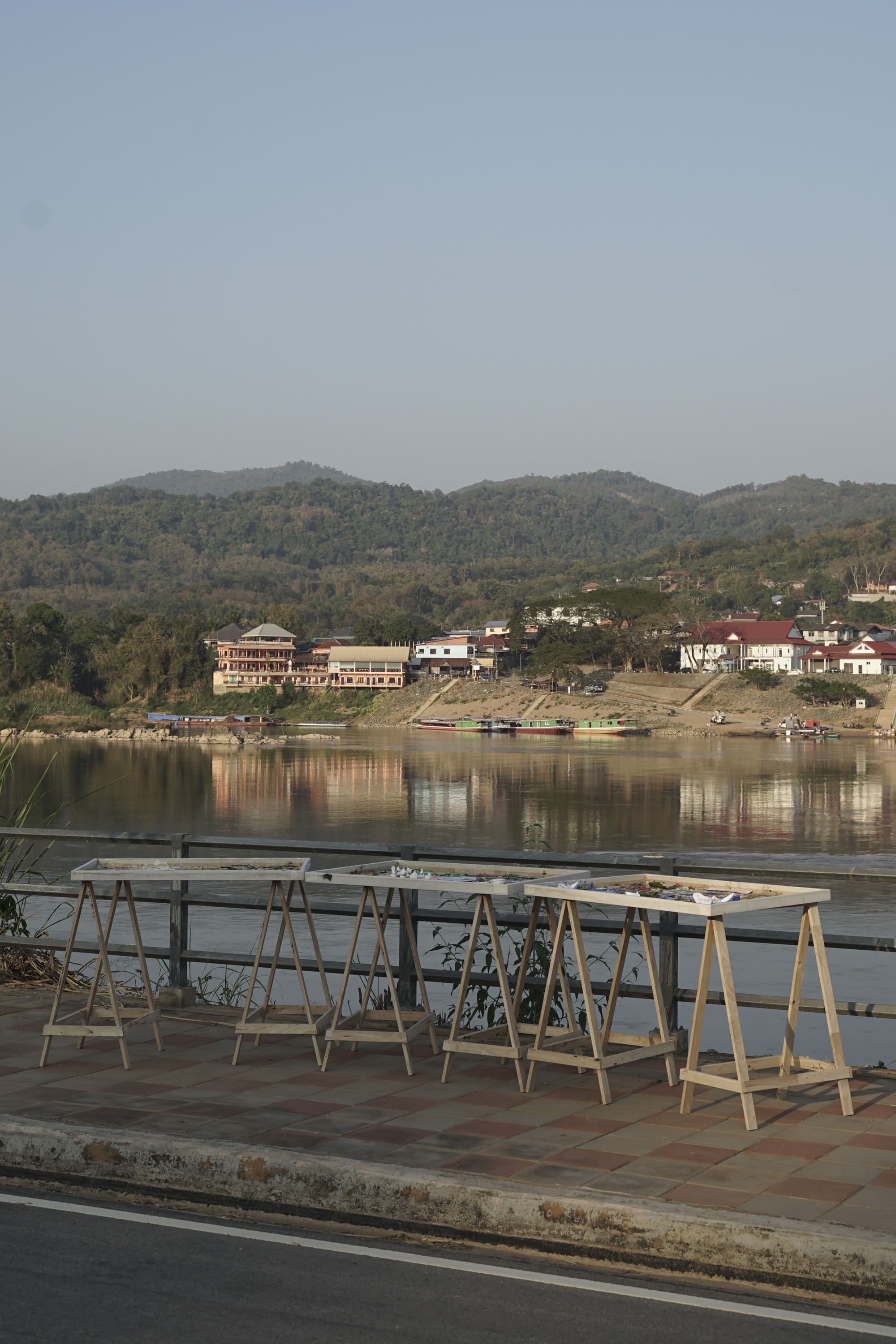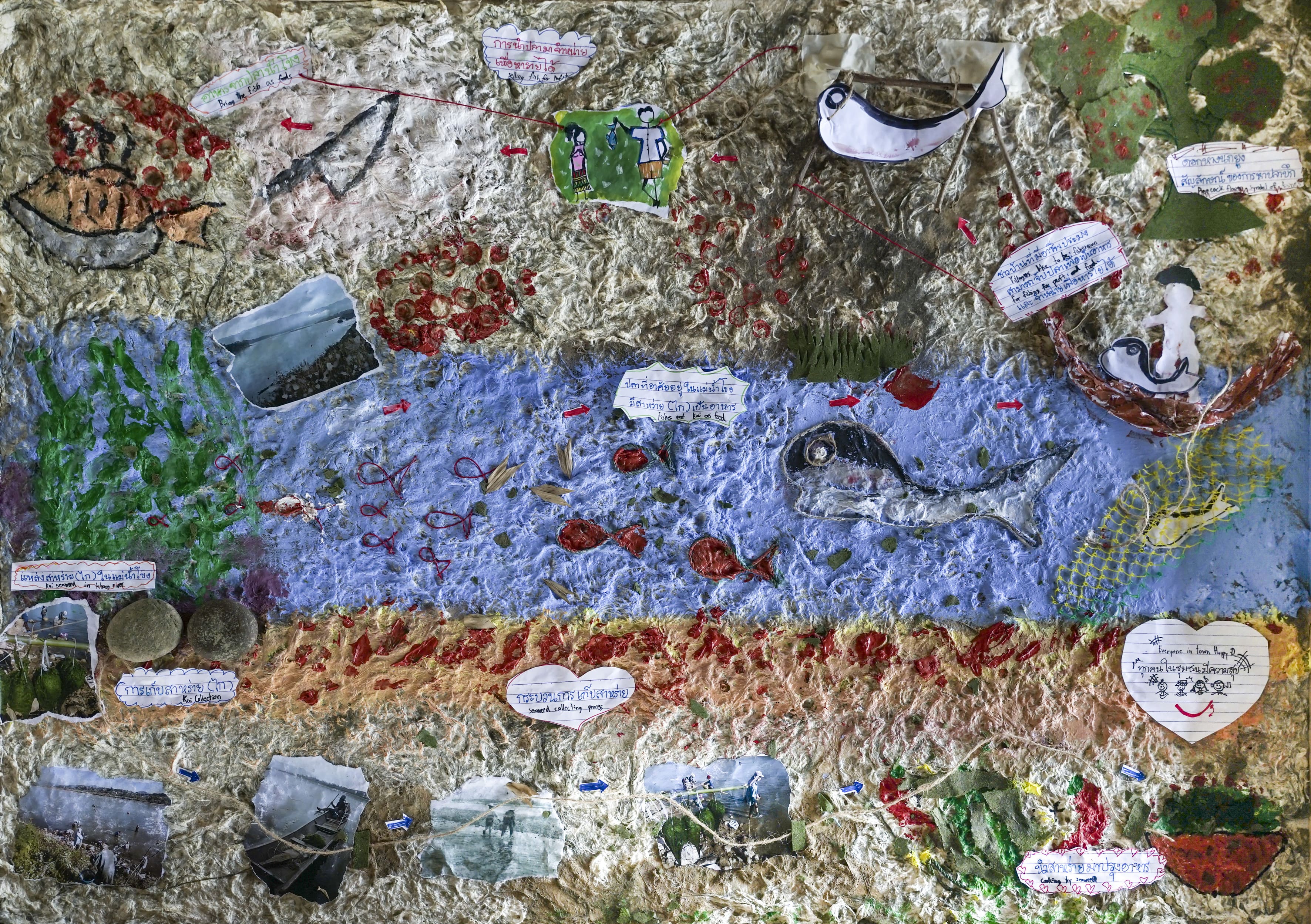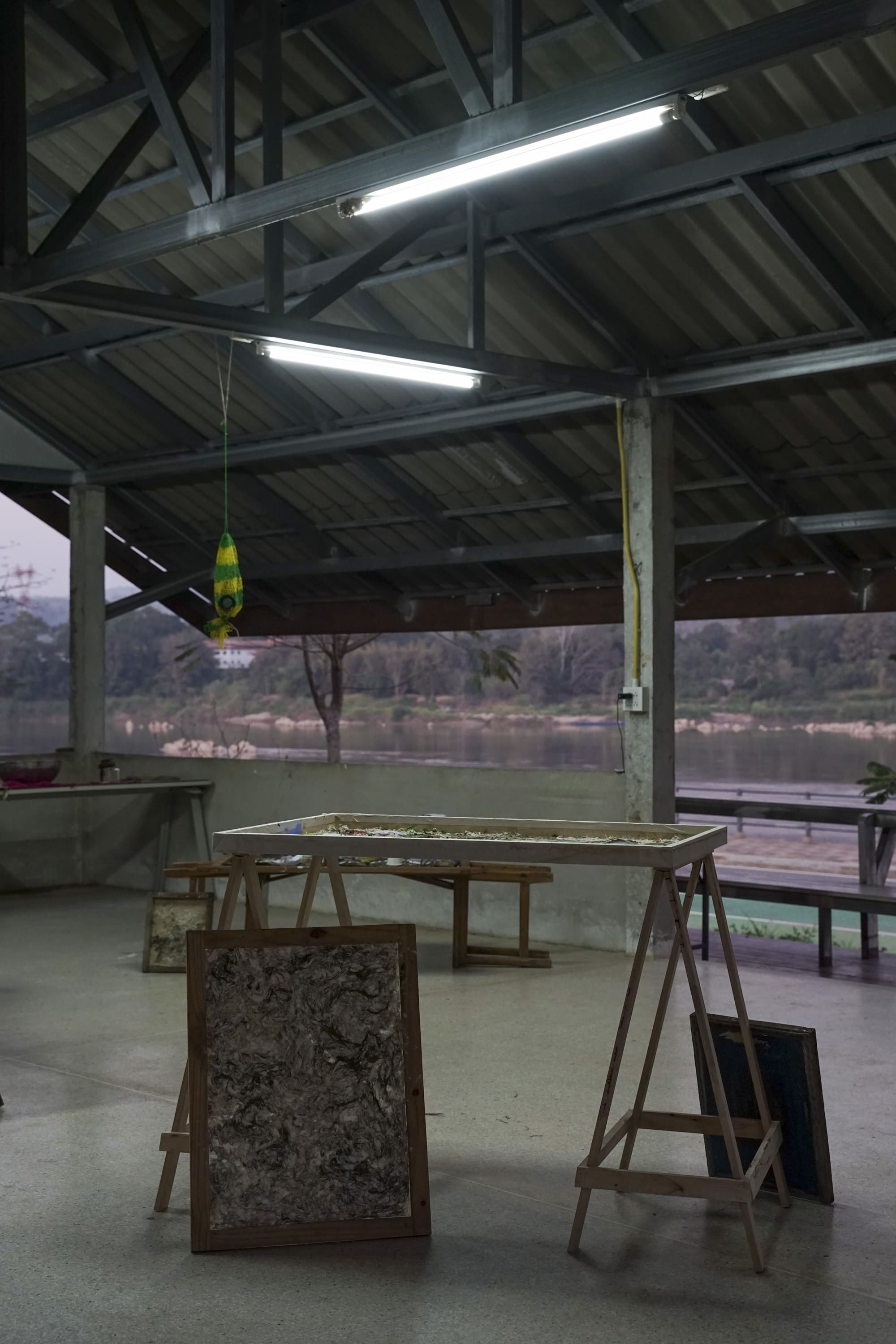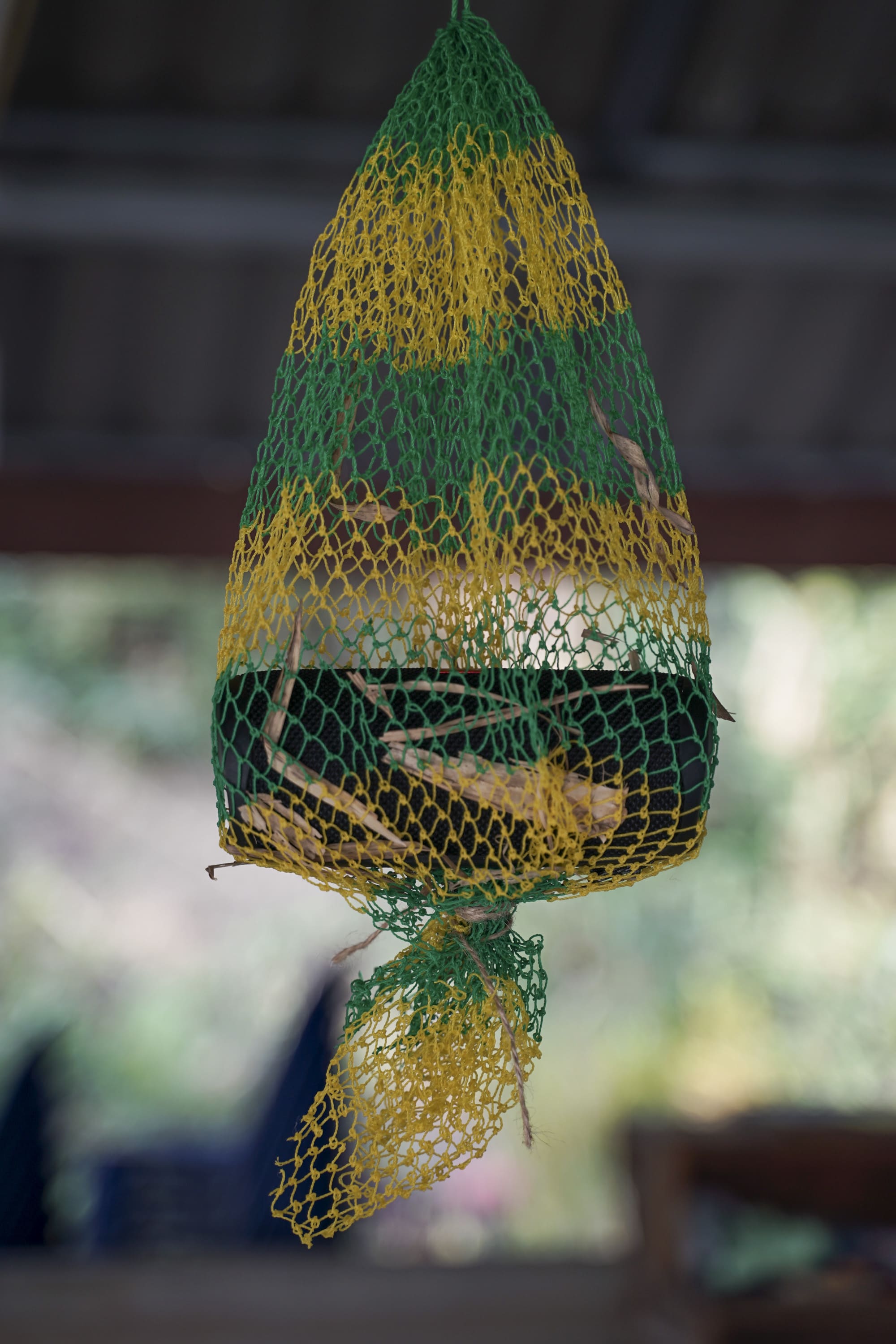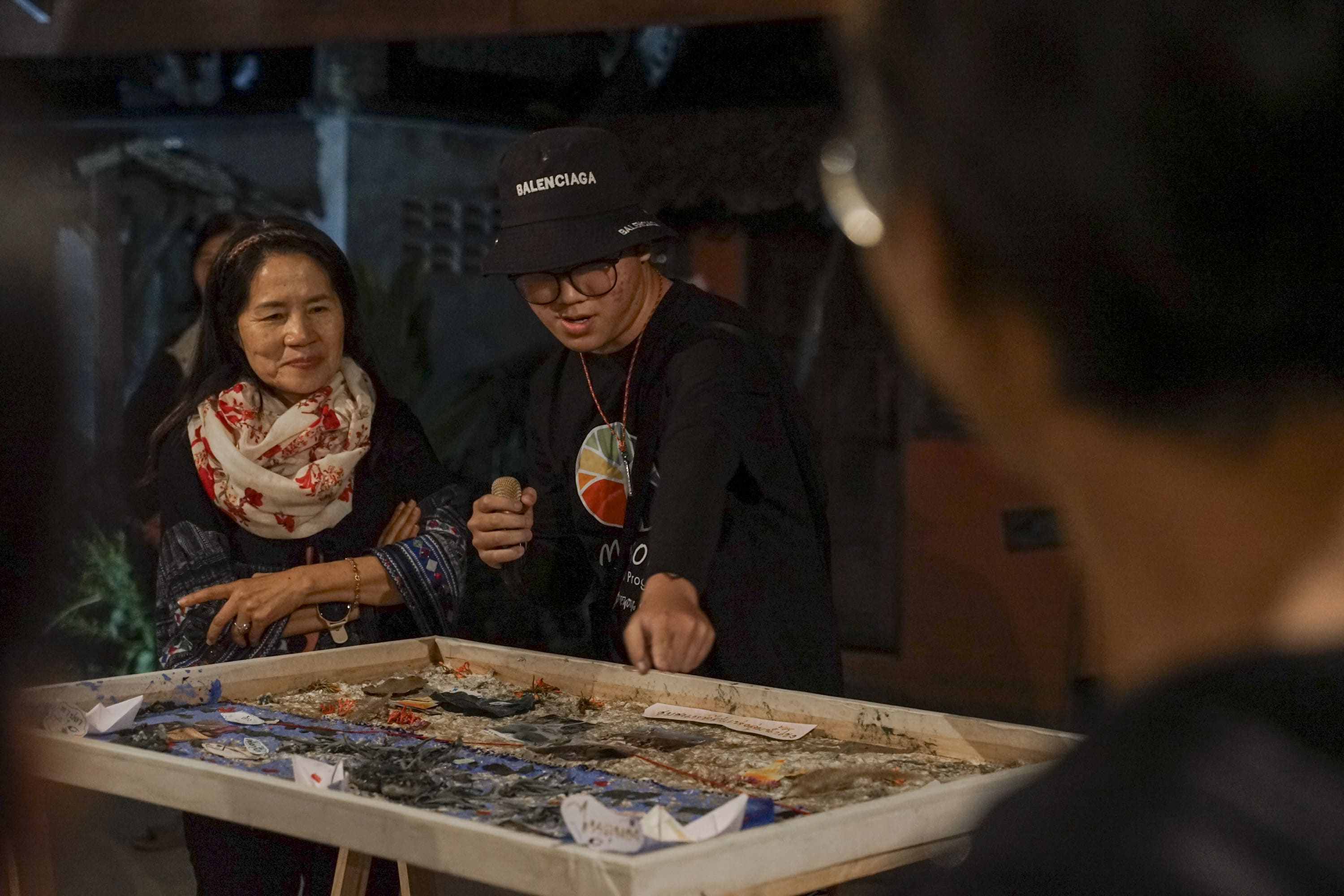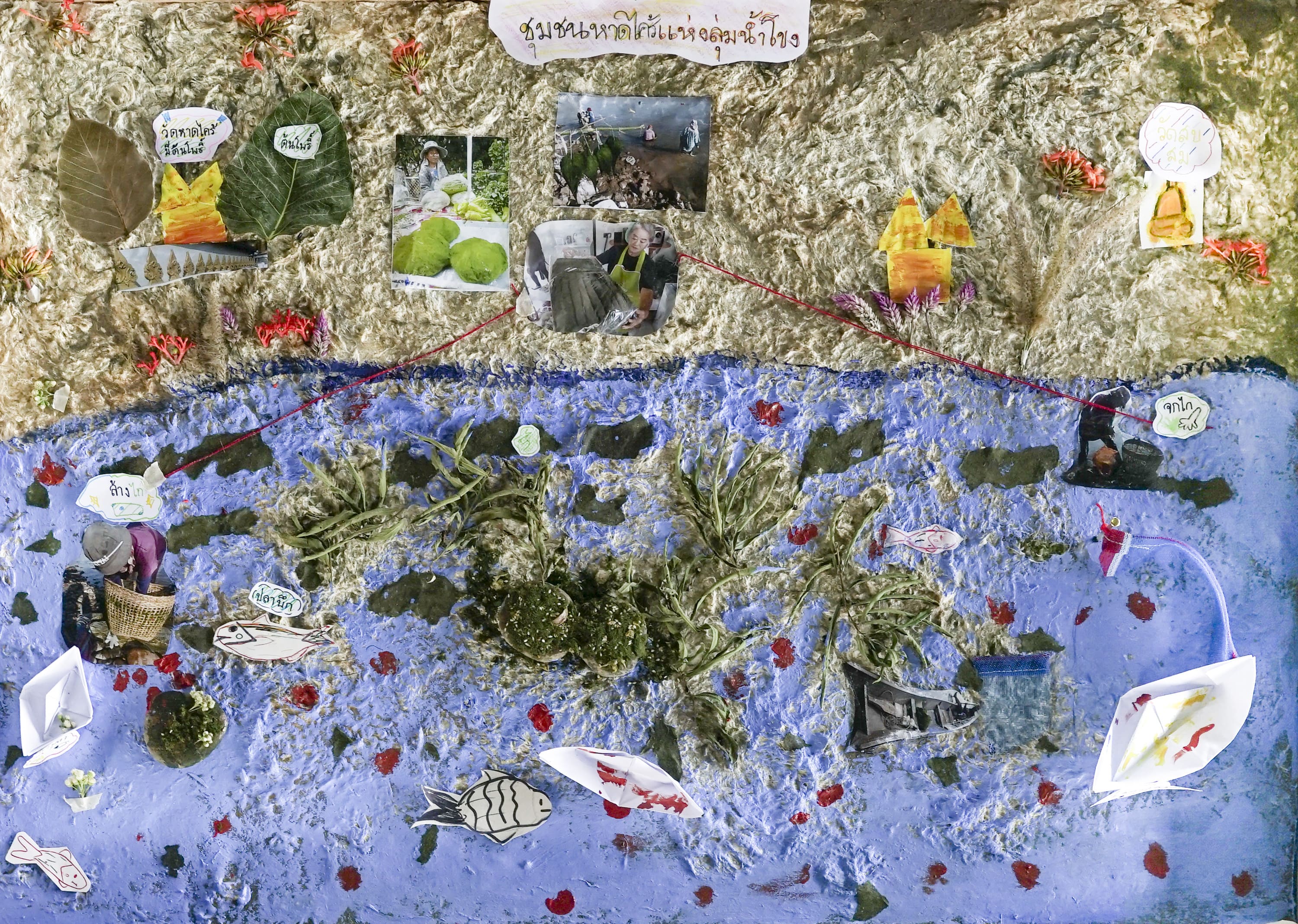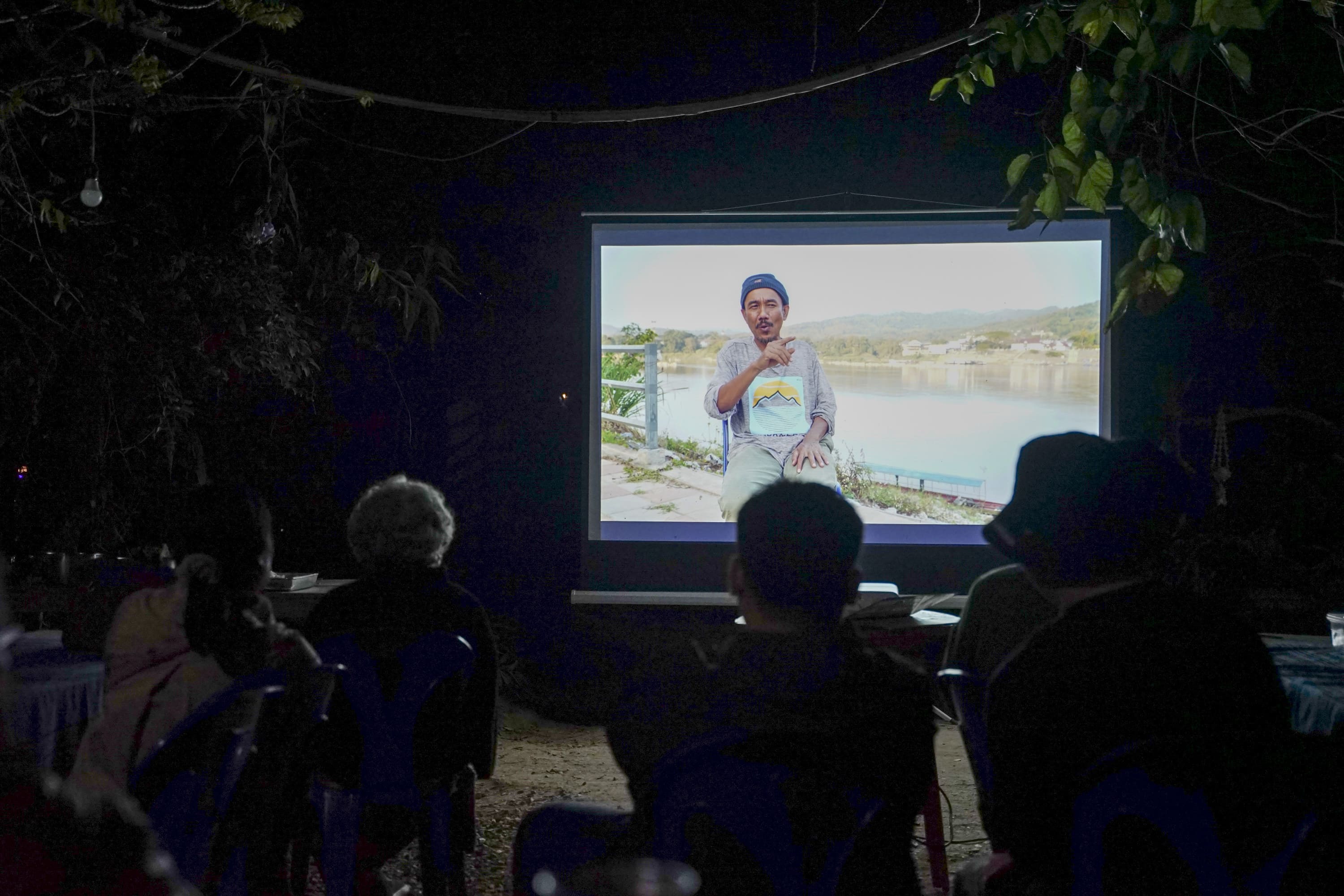In May 2023, I joined Art Worms, a collaborative and transdisciplinary research group involving artists, activists, and local communities to explore the shifting landscape of the Mekong River in Thailand, impacted by upstream dam construction in China and Laos. The fieldwork included interviews, workshops, and sensory engagement with local women and men who harvest Kai, an endemic and ecologically vital river weed. Once central to the Mekong’s life cycle and local economies, Kai now faces threats from erratic water levels and chemical pollution caused by dams.
Drawing on Ala Plastica’s definition of initiatives as artistic processes emerging through exchanges shaped by context and relationships, this research adopts a fluid, responsive approach. Handmade paper crafted from Kai river weed became the foundation for a “moist map” that challenges conventional, neo-colonial mapping practices. Historically, maps of the Mekong served as instruments of power, reducing its complex ecosystems to static forms for control and resource extraction. In contrast, this counter-visualization highlights the river’s inherent dynamism and the entangled relationships between human and non-human actors.
The "Moist Maps: Collaborative Map-Making" Initiative brought together artists and activists, with Kai river weed harvesters and local youth from Baan Had Krai (Chiang Khong) to co-create a series of maps using locally sourced Kai. This workshop fostered intergenerational knowledge transfer, amplifying micro-stories and diverse perspectives that shape the river’s reality. Through embodied cartography, the research reimagines fieldwork as a relational, place-based method, advocating for alternative representations that resist extractive narratives while nurturing situated knowledge and ecological awareness.
